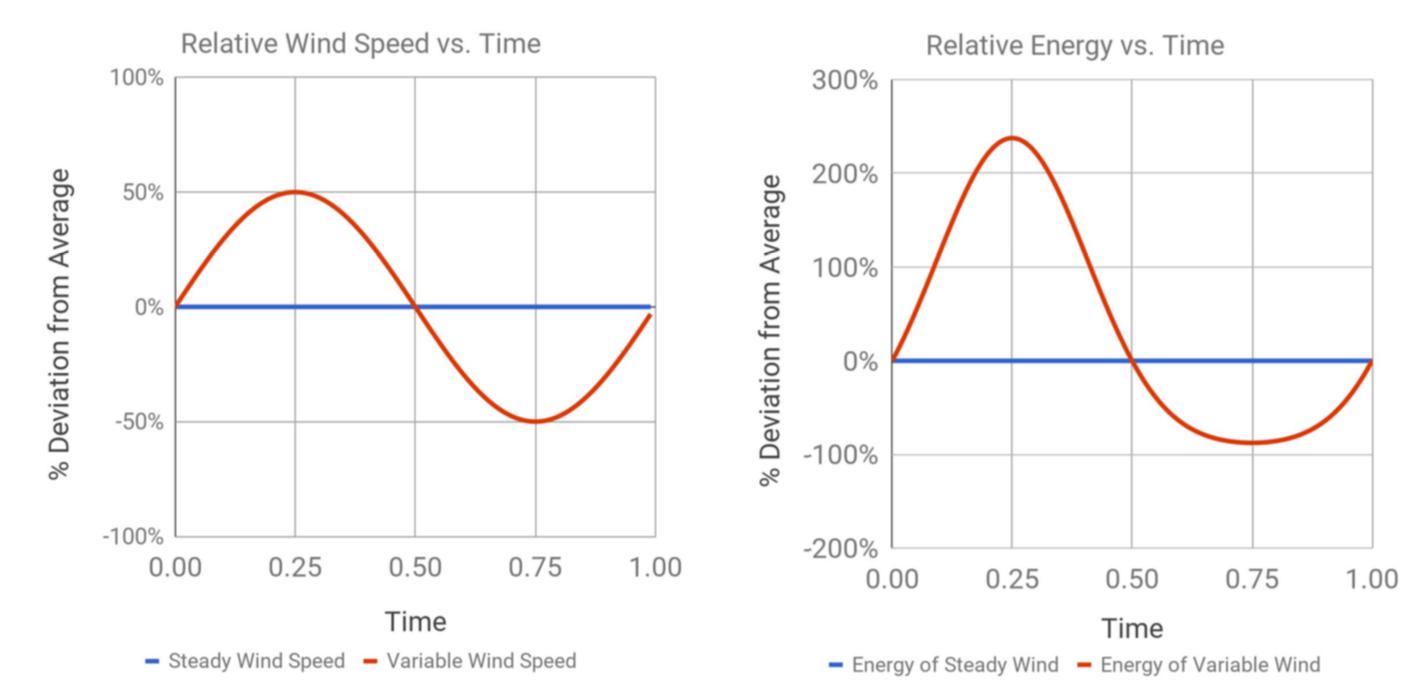
How Uprise Improves the Performance of Our Portable Wind Turbine
info@upriseenergy.com
info@upriseenergy.com
Although both instances have the same average wind speed, there is more kinetic energy in the variable wind than the steady wind. The reason for this is that higher wind speeds add energy to the average much quicker than low wind speeds subtract energy from the average.
One of the ways Uprise Energy maximizes the performance of our portable wind turbine is by utilizing proprietary electronics to manage rotor RPM so that it follows changes in wind speed, maintaining an optimized tip-speed-ratio. This allows the machine to benefit from the exponential energy in wind gusts and is the feature we refer to as Dancing with the Wind.
In this study, the duration of a cycle will be the same, the average speed will be the same, but the steady wind will be constant and the variable wind will increase and decrease by a given percentage. For example, a steady wind would travel at 10 mph and remain unchanging, while a variable wind with an average speed of 10 mph with an amplitude of ± 50% will have a maximum speed of 15 mph and a minimum speed of 5 mph. Although the variable wind changes throughout a cycle, it will still have the same average speed as the steady wind.
The Relative Speed vs. Time chart (left) represents the speed of the variable wind compared to the steady wind. In this example, the variable wind has an amplitude of ± 50% from the average. The Relative Energy vs. Time chart (right) shows the energy in the variable wind compared to the steady wind. The information in this chart is determined from the Relative Speed vs. Time chart.

When the wind speed increases 50% above the average, the energy increases over 200% above the average. However, when the wind decreases 50% below the average, the energy drops slightly less than 100% below the average. Since the increase in energy is much greater than the decrease in energy, the total energy in a variable wind is larger than that of a steady wind. Uprise employed calculus to affirm this conclusion.
The following table shows the percentage increase of kinetic energy for various amplitudes:
% Change in
Wind Speed
m
RKE
% Increase in
KE
± 10%
0.10
1.015
1.50%
± 20%
0.20
1.060
6.00%
± 25%
0.25
1.094
9.38%
± 30%
0.30
1.135
13.50%
± 40%
0.40
1.240
24.00%
± 50%
0.50
1.375
37.50%
± 60%
0.60
1.540
54.00%
± 70%
0.70
1.735
73.50%
± 75%
0.75
1.844
84.38%
± 80%
0.80
1.960
96.00%
± 90%
0.90
2.215
121.50%
± 100%
1.00
2.500
150.00%
% Change in Wind Speed: Percent deviation from the average wind speed.m: Corresponding wind speed change value, from 0 to 1.RKE: Ratio of Kinetic Energy in variable wind to steady wind, specific to the identified m value % Increase in KE: Percent increase in total kinetic energy in one variable wind cycle